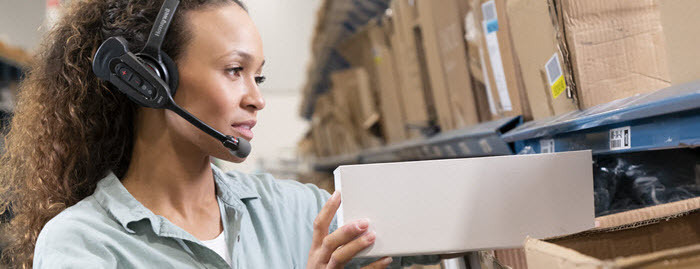Central Layer: one place to manage the master data of all your companies
08 Feb 2024
3 min read
A streamlined logistics process depends for a major part on working with correct data. Because, even if it is not your core business, correctly maintaining the data in your software is vital. From customer information to goods and contracts. Only then you prevent your process from standing still because you receive goods that are not registered in your software yet. And, only then you know for sure you send invoices for your services according to the latest price agreements.
However, when you have multiple companies or sites, keeping track of the so-called master data is significantly more difficult. Because how do you synchronize the data from all these different environments? Preferably without making it your new full-time job. That is when Central Layer comes in. With one single place to manage the master data of all your companies and sites.
What is Central Layer?
As the name suggests is Central Layer an additional layer to manage the most important master data centrally on a corporate level. From this top layer, data like customers, articles, or contracts are spread out over the other 3PL Dynamics environments or companies in the same environment. It is possible to, for example, have more companies or logistic entities in one 3PL Dynamics environment. Or, to have multiple sites all working with their own software environment. In both situations, you can set up a central company to manage the data using the Central Layer module.
Spread data to the correct companies
In the operation, this would mean that there is one company in your software system managing the master data. Have you closed a new customer? Or will an existing customer start storing new articles in your warehouse? Then you apply these changes in that company. After that, the new information is shared via data integration messages to the other linked companies or environments. In that way, the changes are implemented immediately. without interference from your employees.
With Central Layer, we can easily store and ship customer goods from multiple sites. Inventory numbers fluctuate enormously as a result of bottlenecks in the supply chain – often caused by global events such as COVID-19, the blockage of the Suez Canal, or the recent situation on the Red Sea. With Central Layer, we are able to respond to these functions adequately, by diverging to other storage locations. And directly continue the shipping process from these locations. Martijn Put – Supply Chain Improvement Manager at Nedcargo
Choose what data you manage centrally
The data you manage and send to other companies and sites can be set up flexibly. For example, you can choose yourself which tables in 3PL Dynamics you want to control centrally. By doing so, you can determine yourself what companies and sites must receive the centrally controlled master data and which must not.
Configuring Central Layer in your software solution can be divided into three main steps. First, you must define the so-called C/L partners. Here you capture the companies that must be a part of the Central Layer configuration. Then, you choose the C/L entities. In other words, you must choose what tables you want to be managed in the Central Layer. Third, you must set up the correct data integration messages between the companies. For example, the central company needs a SND-CDM-RECORD message, while the receiving company needs the RCV-CDM-RECORD message.
Central invoicing for multiple companies
Besides managing master data as customer and customer articles, you can also capture your financial administration in the central company. In that case, when you create an invoice in the Central Layer, a C/L partner code will be added. When booking the invoice, an invoice number is gathered from the correct ‘C/L partner’. Then, the completed invoice is booked in the administration of that specific company.







